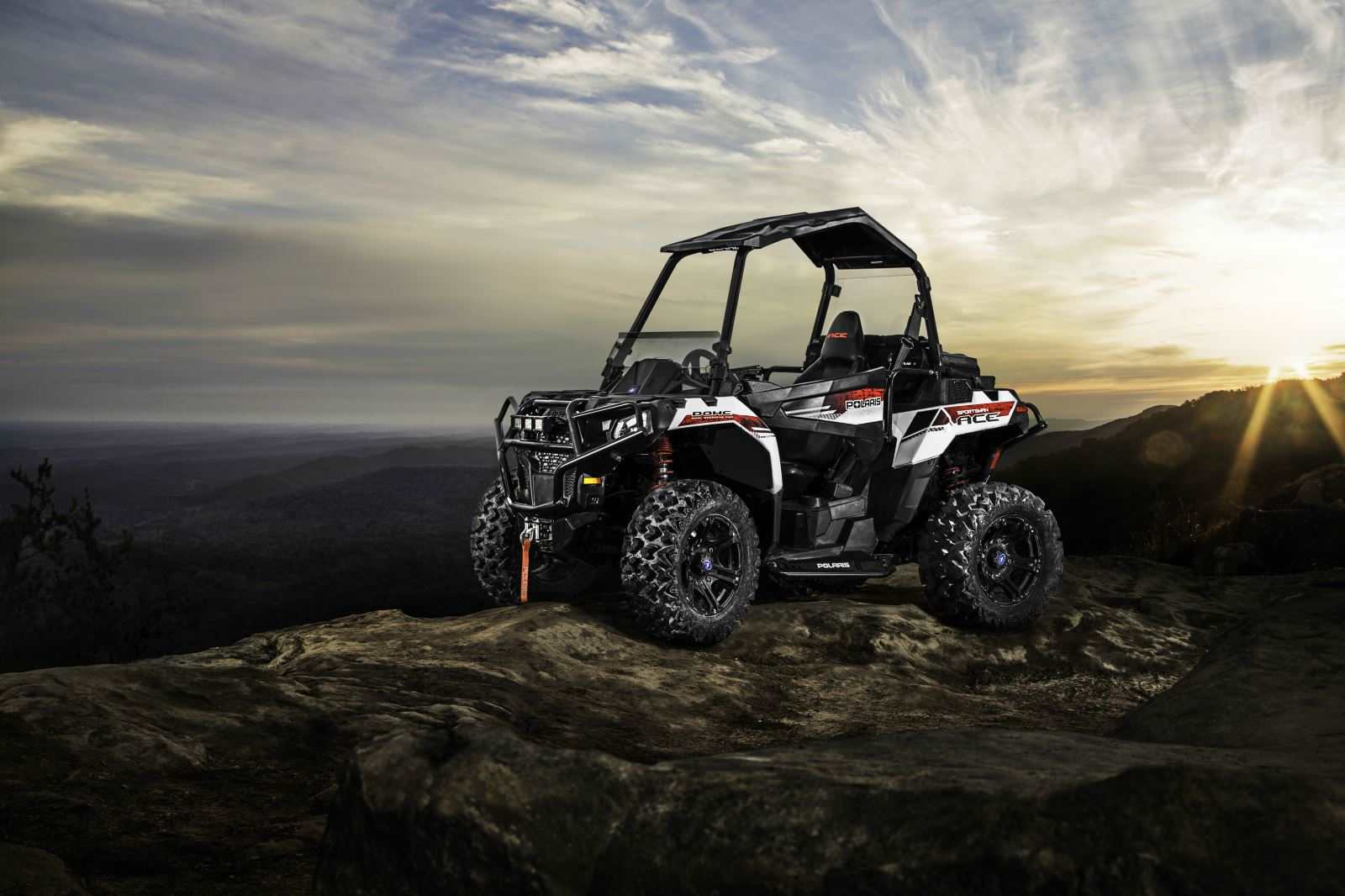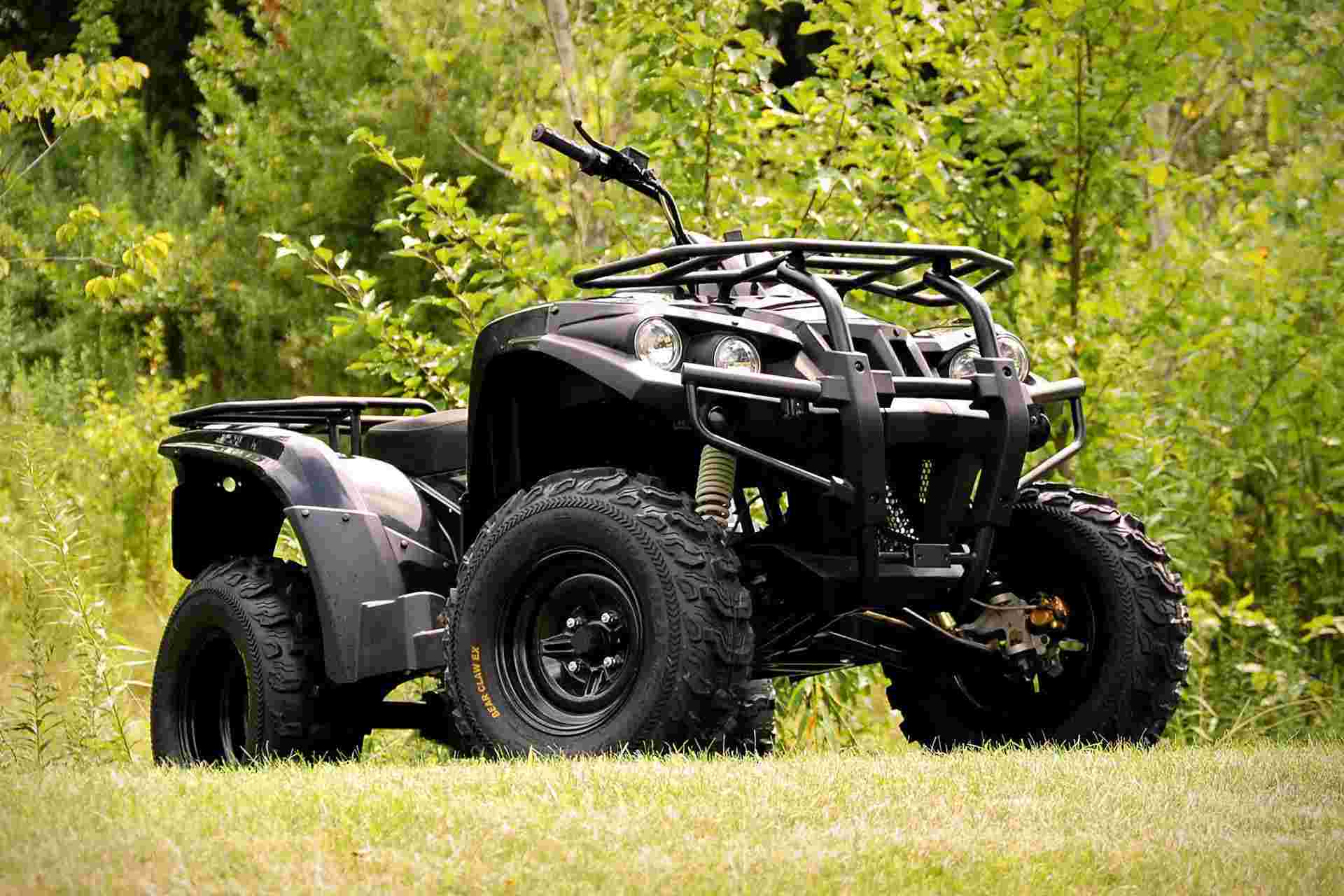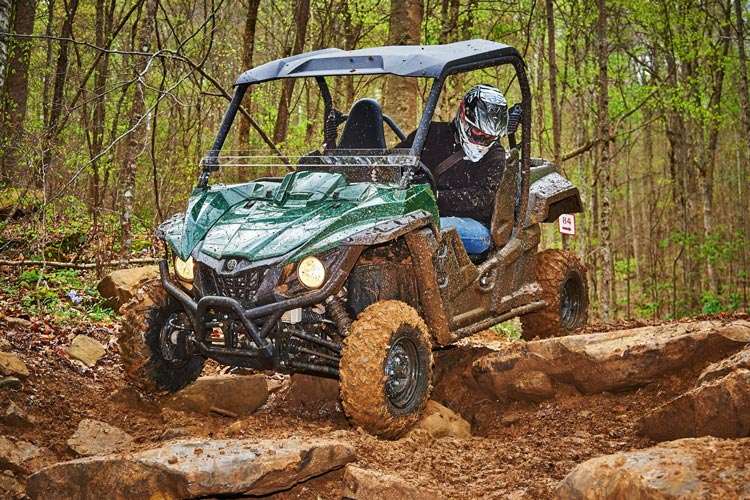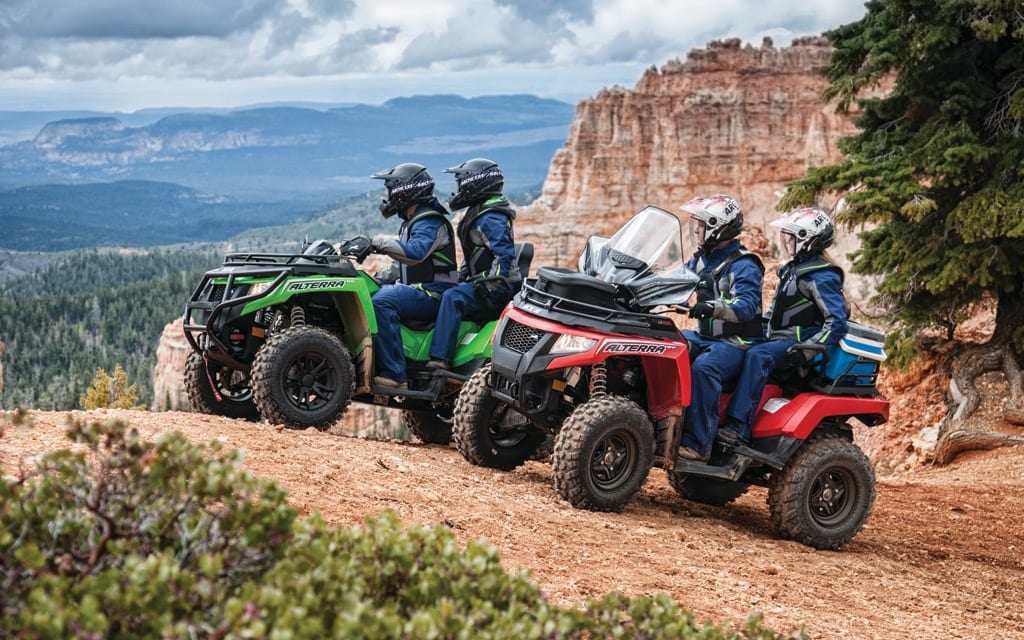What do ATV and UTV stand for?
ATVs are referred to as all-terrain vehicles or quads. As the name implies, ATVs are specially designed to tackle all varieties of terrain. ATVs are compact machines that can accommodate no more than two people – one rider and one passenger. The way one operates an ATV is similar to riding a motorcycle. The rider uses a handlebar to steer an ATV and straddles it just like a motorcyclist would sit on his machine.
A UTV stands for a utility-task vehicle. It is also commonly referred to as a side-by-side (SxS), which means that it can accommodate two to six people, sitting next to each other. Drivers operate UTVs by a steering wheel, brake, and gas pedals, which makes these machines resemble ordinary cars. More advanced UTV models can have up to six wheels and are used for military and other special purposes.

ATV or UTV? What makes these vehicles so special?
To pick a vehicle that suits your goals isn't easy, especially when the market offers such a big variety of ATV and UTV models. To understand what is best for you, one must take their distinctive features into account.
ATV Pros
- Budget. ATV models are several thousand dollars cheaper than UTVs. The price ranges from $2.000 to $10.000.
- Maneuverability. ATVs are smaller, lighter, and more agile, which makes them perfect for tough trails and thick spaces. The rider can see practically everything within immediate reach and quickly alter speed and course in a challenging environment.
- Driving experience. ATVs offer an engaged riding. You can stand up when the vehicle turns up on a bumpy trail, lean forward as your ATV moves up the hill, or adjust your position whilst the machine is turning. Rider's legs can work as a suspension absorbing shock, which makes the ride more comfortable and less painful. In a UTV, the driver ends up feeling every single bump on the trail.

ATV Cons
- Passenger capacity. Most ATV models are designed to accommodate only one person. Some ATVs have enough space for two people. Yet, the sitting position is less comfortable than that in a UTV.
- Storage capacity. ATVs are equipped with steel racks. Yet, it is inconvenient to transport bulky objects, as the rider will have to tie them up to the racks or find some kind of accessory to secure the gear. If you want to carry a larger load, you will have to attach a trailer to your ATV. Despite these inconveniences, ATVs feature adequate towing capacity, ranging from 220 kg to 750 kg, which is still significantly less than the 900kg average towing capacity of UTVs.
- Safety. Unlike UTVs, the safety of ATVs can only be enhanced by a windshield. The rider will have to buy a quality motorcycle helmet and a special outfit to protect himself from possible injuries.
UTV Pros
- Passenger capacity. UTVs are designed for two or more passengers and have comfortable seats.
- Storage capacity. Many UTVs are equipped with a cargo bed, which is convenient for transporting hunting, camping gear, and many other tools. The average amount of load a UTV can carry is up to 500 kg. Besides, UTVs provide spacious in-cab storage for stowing smaller and more valuable items. An average in-cab storage capacity is approximately 70 L.
- Safety. The safety of UTVs is enhanced with the following equipment:

- A windshield. It protects the driver from loose rocks and dust.
- Doors.
- A roll cage.
UTV Cons
- Maneuverability. In a large UTV, it is much trickier to drive along a narrow trail or squeeze through trees growing close together.
- Budget. You can buy the cheapest UTV model for $10.000 and the price for a more advanced UTV can be as high as $30.000.
ATVs vs UTVs Pros and Cons Table
We compiled a comparative chart of ATV and UTV models, demonstrating which vehicle performs better than the other when it comes down to some basic specifications.
|
ATV |
UTV |
|
|---|---|---|
|
Pricing |
✓ | |
|
Size |
✓ | |
|
Weight |
✓ | |
|
Passenger Capacity |
✓ |
|
|
Maneuverability |
✓ | |
|
Towing Capacity |
✓ |
✓ |
|
Storage Capacity |
✓ |
|
|
Safety |
✓ |
|
|
Average Fuel Capacity |
15 L |
40 L |
|
Average Fuel Economy per 100 km |
15 L |
11 L |
ATVs vs UTVs for Different Purposes
To decide what is better, ATV vs UTV, one must have a clear idea of what to expect of the vehicle in terms of its performance. There is a great deal of difference between ATV and UTV models, which makes the machines suitable for different purposes.
ATVs vs UTVs: Hunting

One of the most important features to consider is cargo capacity. UTVs allow you to load as much gear as you might need to hunt in their cargo beds and provide up to 1,000 kg of towing capacity, depending on the model you go for. ATVs only come with front and rear cargo boxes, which might come in handy when you travel light but is not suitable if you plan to go big-game hunting.
ATVs vs UTVs: Trail Riding

Another essential feature is maneuverability. ATVs are more agile and much easier to operate on hard trails than big and wide UTVs. With an average of 47 inches in width and 82 inches in length, ATVs can fit into the areas most side-by-sides fear to tread.
ATVs vs UTVs: Pricing
UTVs cost considerably more than ATVs and may require the purchase of additional accessories to enhance the vehicle's performance. Comparing models of the same brand, a Honda Fourtax Foreman 4x4 starts out at $6.099 versus a Honda Pioneer 1000 at $15.899.
Which one is right for you?

Before buying the vehicle, think of what type of job you want to get done and if it is an ATV or a UTV, which is more likely to assist you. Regarding the choice between ATVs and UTVs, one must answer these questions.
1) How much equipment do I need to haul?
2) Do I need to haul another passenger?
3) In what kind of area do I plan to hunt/travel/work?
4) How tight is my budget and how much am I willing to spend on the machine?
Your answers will show you which type of vehicle, an ATV or a UTV, will offer you more benefits in your line of work.
ATV vs UTV — FAQ
Which is better for trail riding: ATV or UTV?
ATVs are narrower and more agile; UTVs add comfort, seats, and safety features for longer rides.
Which is better for work and hauling?
UTVs typically offer higher payloads, cargo beds, and better stability for tools and materials.
Are UTVs more expensive than ATVs?
Generally yes. UTVs cost more due to size, chassis, seating, and safety equipment.
What about storage and accessories?
Both support cargo boxes and fuel packs. Pick ATV/UTV-specific mounts for a secure fit.









